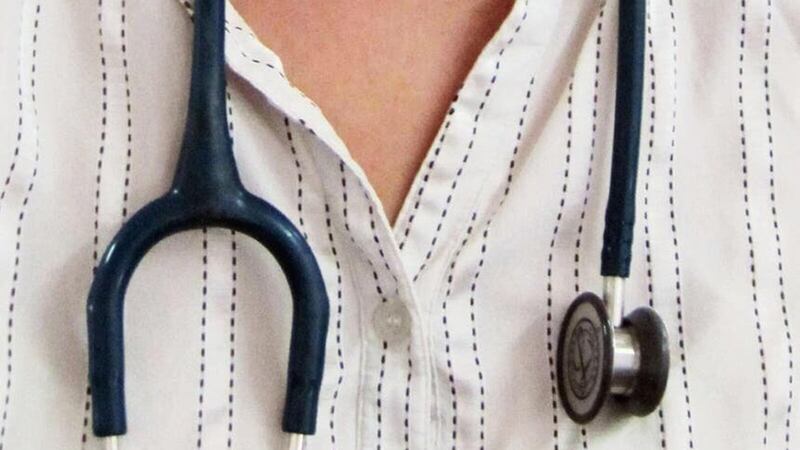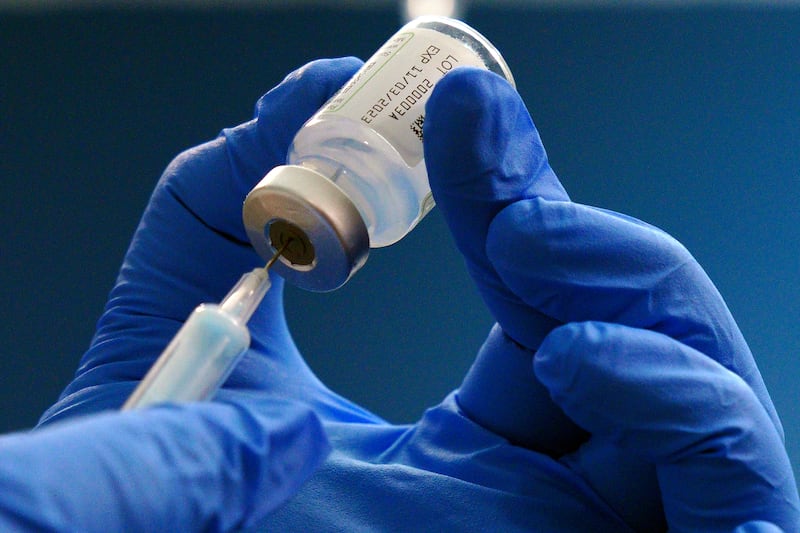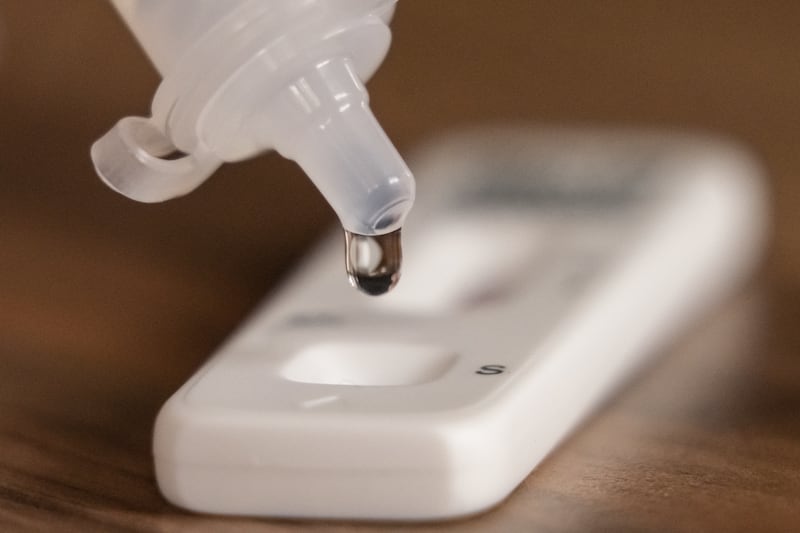The north’s contact tracing service is attempting to message more than 5,000 people a day as more than 1,000 new Covid cases are confirmed daily, a senior official has said.
Dr Gerry Waldron, head of health protection at the Public Health Agency, said the service is dealing with a massive increase in cases with most recent figures showing that 7,090 people tested positive in the past seven days.
Everyone who tests positive and the people they have had close contact with all need to be warned they must self-isolate for 14 days.
[ READ MORE: The New Normal: 'We've seen a massive increase in homelessness'Opens in new window ]
Dr Waldron said each case can generate “on average three to four contacts”.
“In some cases [there are] 20 to 30 contacts,” he said. “In the early days [of the pandemic] you would only have got one or two contacts.”
He said the greater the number of Covid cases, the more urgent it is that people are contacted as quickly as possible.
“The sooner we can do that the sooner we can break what’s called the chain of transmission.”
The contact tracing service, which operates seven days a week, has been heavily criticised in recent weeks, particularly around a lack of information.
The Irish News reported earlier this week that figures up to October 6 – before it moved to a new online system – show that of 4,128 positive cases transferred to the service, 2,317 people were “reached” as well as a further 4,681 people who had been in close contact.
“Is it working as well as it possibly can under the current circumstances? The answer in my opinion... it certainly is,” Dr Waldron said.
He added: “I suppose we could be devoting some of our resources to giving more information or publishing more information but when you’re dealing with a thousand cases a day your priority is to break the chain of transmission. That has to be your absolute priority.
“It would be great to have excellent data, which we will have down the line, but there’s only so much you can do in this type of unprecedented situation.”
Dr Gabriel Scally, president of epidemiology and public health at the Royal Society of Medicine, told The Irish News there is an issue about what data the Northern Ireland Executive and the Department of Health are publishing.
“It’s all very well saying they’re so busy doing the job that they can’t publish any information but how do the public know that the system is working well if they don’t publish any information about it?”
Dr Scally said the public must know “how long it takes them to get a test, how long it takes them to get the results of a test – all of the data that’s available in England and the south but is not available in Northern Ireland”.
The contact tracing service has 176 staff – 151 of whom are fully trained, with the remaining 25 being trained this month. Recruitment for more is under way.

Most of the tracers are based in County Hall in Ballymena but Dr Waldron said some “can do remote working as well”.
“Some of them are medical, some of them are nurses, some environmental health officers,” he said.
“We’ve even got a couple of dentists. It’s people who are coming from a professional background and who have an expertise in talking to people.”
Initially, the contact tracing service saw call handlers ringing every contact. But just more than a week ago, on October 9, the service switched to a primarily online system.
This allows text messages to be sent to those who have been in close contact with someone who has tested positive for coronavirus.
“If we were relying on the phone system, all the call handlers, no matter how many people we have, you’re going to get to the stage where that runs out of capacity,” Dr Waldron said.
Everyone who has received a positive coronavirus test is contacted by text and asked to input details of their close contacts online.
“As soon as it comes back to us, those contacts are informed by text. It’s the same with contacts which are done through the phone,” Dr Waldron said.
“As you can imagine it has freed up a huge amount of the contact tracers’ time and has allowed them to concentrate on the more complex situations.
“It will also free up time within the contact tracing service to allow us… to identify links between the cases, like clusters of cases associated with let’s say a workplace, a social event, or whatever. We can home in on the complex issues, give a bit more time to them, so it’s a really important development.
“We were planning to bring this in anyway regardless of the numbers coming up but we just had to bring it in a bit sooner than we would have otherwise. The signs are that it’s working quite well at the moment.”
Dr Waldron said the recent spike in cases was partly due to some people not adhering to rules around social distancing.
“It’s quite a complex thing… it might be an individual might have been in a workplace, might have been in a pub or restaurant, might have gone to a house party afterwards, maybe they played a game of football with their mates,” he said.
He added: “Covid is a respiratory virus and we know that it’s highly infectious so even if 80 or 90 per cent of people are doing what they should be doing, which they probably are, it only takes, in a crowd, for one person to be infectious and suddenly you’ve got 20 or 30 new cases springing up.”
He warned that the number of cases is rising in every age group but particularly amongst the 16-25 and 25-40 age groups.
“We are going to see, and we are already seeing, a rise in the older population because the older population are more vulnerable and our big concern now is we are going back to the same pattern we saw in the first wave… We saw more hospitalisations, more deaths,” he said.
Dr Waldron said in terms of public health emergencies “nothing comes close” to the scale of the Covid-19 in his experience.
“There’s no sign of when it’s [Covid-19] going to let up,” he said.








